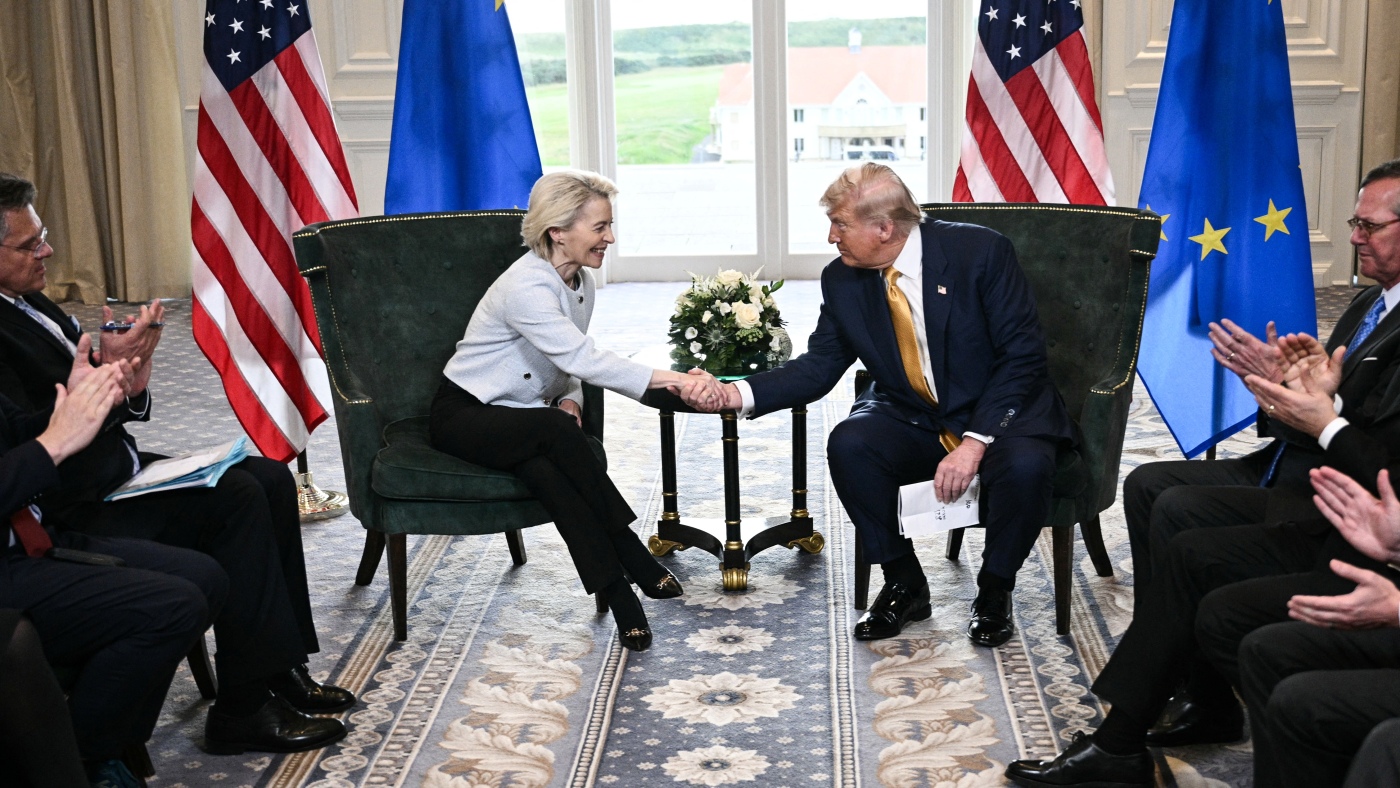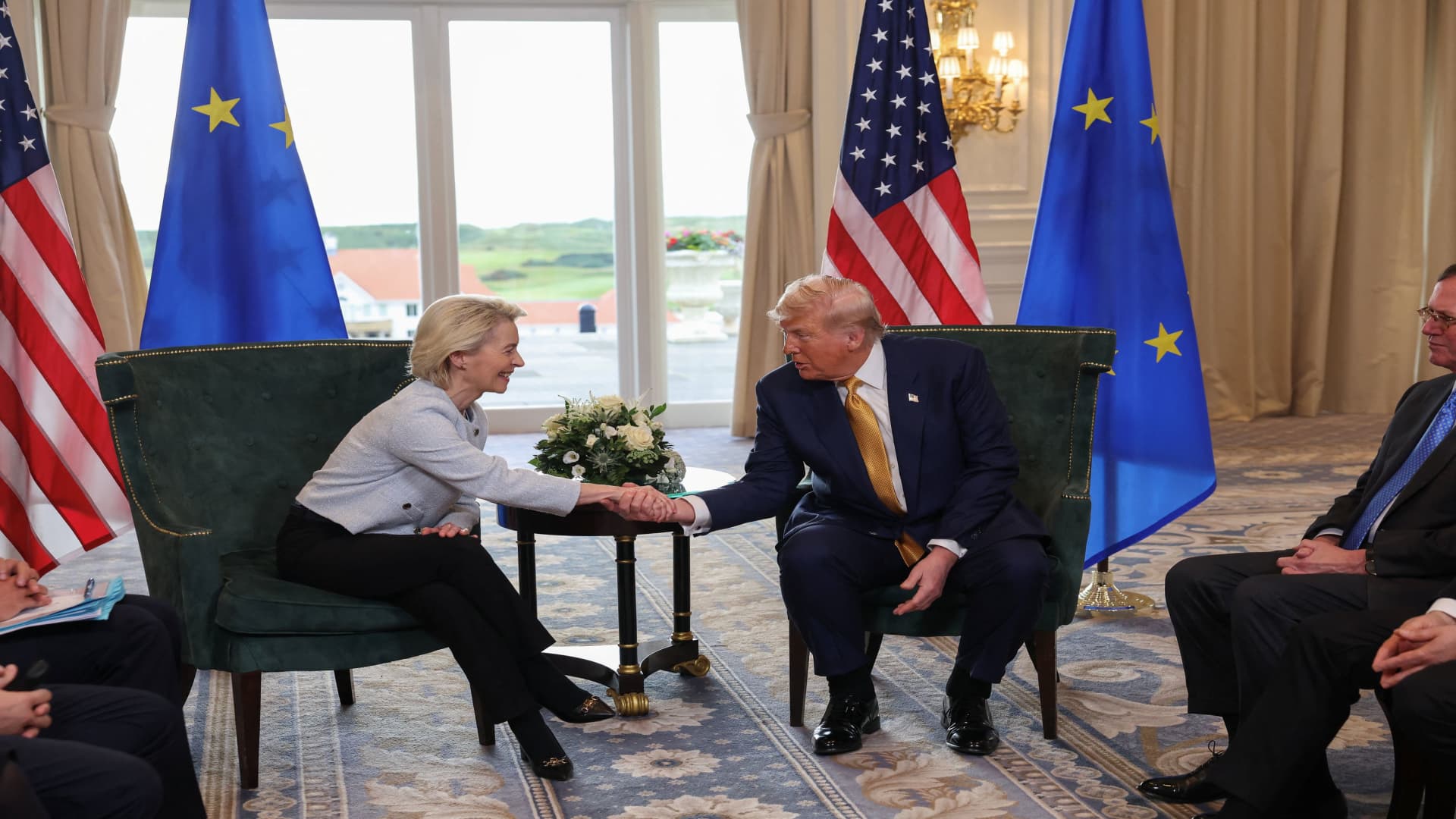In just a matter of days, President Donald Trump signaled a new direction in Washington’s approach to Russia’s invasion of Ukraine and its relationship with NATO.
Trump talked this week to Russian President Vladimir Putin directly for the first time since the war began, his Defense Secretary declared Ukraine’s NATO membership and returning its pre-invasion borders unrealistic, and his vice president raised the possibility of future direct U.S. military action against Russia.
Speaking to NATO leaders on Friday, Vice President JD Vance suggested the Trump administration would not hold back from criticizing Europe, which he accused of “censorship” and failing to maintain security.
“The threat that I worry the most about vis-a-vis Europe is not Russia, it’s not China, it’s not any other external actor,” Vance said. “What I worry about is the threat from within, the retreat of Europe from some of its most fundamental values, values shared with the United States of America.”
Taken together, the moves confirmed predictions that Trump would take a different approach to Ukraine than former President Joe Biden, who steadfastly supported Kyiv in its war against Russia, and would distance the U.S. from its strong, decades-long ties with NATO, its alliance with dozens of European states.
Hegseth takes Ukraine NATO membership off the table
At a meeting with European leaders to coordinate support for Ukraine on Wednesday, Defense Secretary Pete Hegseth poured cold water on two goals that the U.S. pushed for years – NATO membership for Ukraine and Russia’s complete return of its territory.
A return to Ukraine’s borders before 2014, when Russia invaded and annexed Crimea, is “unrealistic,” and admitting NATO to Ukraine is “not a realistic outcome of a negotiated settlement,” Hegseth said.
In response, Ukrainian President Volodymyr Zelenskyy told the Munich Security Conference, if Ukraine can’t join NATO, it would need to double its army to 1.5 million to fend off Russia’s invasion. But past promises from the U.S. that Ukraine would eventually earn NATO membership were “just talk,” he said.
Hegseth’s comments elicited pushback from U.K. Prime Minister Keir Starmer, who reaffirmed that Ukraine was on an “irreversible path to NATO.”
Trump said this week that direct talks with the leaders of both Russia and Ukraine to negotiate a ceasefire in Ukraine had already begun. On Wednesday, he held his first known call with Putin since he took office for the second time and floated a future meeting in Saudi Arabia – after Biden iced out the Russian leader for years.
Trump pulls away from Europe, makes demands of allies
Meanwhile, Trump dispatched his Treasury Secretary, Scott Bessent, to Kyiv to extract a deal for access to Ukraine’s natural resources in exchange for continued U.S. support for the Ukrainian military. It was a move in line with Trump’s long-running complaints that the U.S. is getting a bad shake for funding Ukraine’s defense while receiving nothing in return.
Trump has also said the U.S. gets a bad deal out of NATO, which it pays into more than any other member state. The U.S. has pushed for years for NATO members to contribute more. Hegseth carried Trump’s comments to NATO this week, telling European leaders they must increase their spending on defense to 5% of their countries’ GDPs – a figure that no country, not even the United States, currently meets. The U.S. contributes about 3.5% of its GDP to the alliance.
Vance threatens direct U.S. military action in Ukraine
U.S. officials have long argued that negotiating a ceasefire in Ukraine would leave the door open for Russia to attack again and seize more territory once Ukraine was off its guard.
Vance provided the answer on how the Trump administration would approach that looming threat on Thursday – with sanctions and possible military action.
More:From ‘crazy SOB’ to ‘he wants peace’: Trump flips the US’s Putin script
“There are economic tools of leverage, there are of course military tools of leverage,” he said in a Wall Street Journal interview.
His comments raised questions. How much more, for example, could the U.S. sanction Russia than it already has? Days before he left office, Biden issued a new set of sanctions targeting the country’s oil and gas sector. It was a final punch after years of the administration leveling hundreds of sanctions on Russia. While the sanctions caused some pain within the Russian economy, analysts say, they failed to stop Russia’s GDP growth or cause a widespread collapse.
Why isn’t Ukraine in NATO?
Since Russia invaded Ukraine nearly three years ago, Ukraine has pushed for admittance into NATO, the North Atlantic Treaty Organization, saying it would give the country the security it needs to guard against Russia’s attacks.
Biden said Ukraine would eventually become a NATO member, and other European leaders in the alliance have called its future admittance all but guaranteed.
Hesitation to let it in comes down to one of the principles of NATO’s founding treaty – Article 5. It dictates that an armed attack against one member shall be considered an attack against them all.
More:Hegseth tells Europe a return to Ukraine’s pre-Russia invasion borders is ‘unrealistic’
That means that, if Ukraine became a NATO member, Russia’s attacks on the country would would put the entire alliance – most of Europe – at war with Russia, potentially kickstarting a world war.
The principle is also the reason why the Biden administration drew a red line on direct U.S. military involvement in NATO – a retaliatory strike by Russia would also invoke the article. The Biden administration pushed that line when it dropped a ban on U.S. military contractors working in Ukraine, allowing in a small number to repair Ukraine’s military equipment.
What is NATO?
NATO is comprised of 30 European states, the U.S. and Canada. It was formed after World War II to unify the U.S. and its European allies and maintain American “presence” on the continent.
In the aftermath of World War II, U.S. Secretary of State John Marshall drew up the Marshall Plan, which supplied billions of dollars to rebuild the large swaths of Europe destroyed in the war, but also aimed to stop the spread of communism into Europe.
When the Soviet Union refused to join, calling the program “a plan for interference in the domestic affairs of other countries,” it created a rift between the country and the rest of Europe, which led to the development of NATO and sparked tensions that grew into the Cold War.


